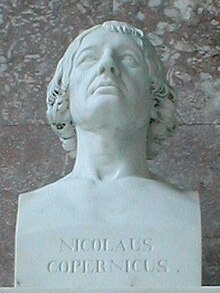Walhalla (memorial)
The hall is a neo-classical building above the Danube River, in Donaustauf, east of Regensburg in Bavaria, the exterior modelled on the Parthenon in Athens.The fully sculptural gable field on the north side, designed by Christian Daniel Rauch and executed by Ludwig von Schwanthaler, shows on the left the Germanic tribes under Arminius in the battle in the Teutoburg Forest against the Romans attacking from the west right.The southern gable represents Germany's liberation in 1814, in the middle Germania, from the left and right the German states and federal fortresses approach in homage, in the spandrel the border rivers Rhine and Moselle are symbolized.The surrounding frieze by Martin von Wagner depicts the early history of the Germanic peoples, their departure from the Caucasus and their immigration into Central Europe.When the memorial was opened in 1842, Guido von Lessner authored a poem about Germany's greatness which was set to music by Joseph Hartmann Stuntz.Whereas the Valhalla of Norse mythology served as home to those gloriously slain in battle, Ludwig intended his Walhalla not only for warriors but also for scientists, writers, and clerics, and specifically included both men and women.Leo von Klenze's plans reveal the purpose of the subterranean level set within the foundation, the entrance to which is visible from the Danube River.Beginning in 1933, when Kraft durch Freude and other National Socialist organizations promoted trips to Walhalla, visitor numbers increased exponentially.Official practice since 1945 has been to favour "eminent figures from science or art, or individuals with extraordinary social or caritative merit".The lower row comprised a total of 26 busts of modern scholars, beginning with Lessing and ending with Goethe.






Lower row: Ernst Gideon Freiherr von Laudon , Wolfgang Amadeus Mozart , Duke Karl Wilhelm Ferdinand of Brunswick-Lüneburg , Justus Möser , Gottfried August Bürger .





Lower row: Sophie Scholl .


Danube Riverhall of fameGerman historyGerman tongueGreater GermanyAnglo-Saxonneo-classicalDonaustaufRegensburgBavariaParthenonAthensValhǫllNorse PaganismLudwig I of Bavariaunification of the many German statesGerman EmpireLeo von KlenzeplaquesArminiusBattle of the Teutoburg ForestcolonnadeNapoleonFirst French Empireannexed German landsRhine RiverNorth SeaConfederation of the RhineFrancis II, Holy Roman EmperorHoly Roman Empire of the German NationEmperor of AustriaWar of the Fourth CoalitionLudwigKingdom of Bavariaethnic GermanJohann Gottfried SchadowNicolaus CopernicusJohannes von MüllerfriezeGerman ConfederationthalerKrause catalogGermanicHoly Roman EmpireValhallaNorse mythologymodern German statemodern German identitySwedishRussianAustrianMartin LutherArchduke Charles, Duke of TeschenJosef Wenzel Graf Radetzky von RadetzFriedrich SchellingLudwig van BeethovenRuhmeshallea bombing raidLiberation
HallHelmuth von Moltke the ElderBavarian Ministry of the InteriorMax RegerAdalbert StifterJoseph von EichendorffWilhelm Conrad RöntgenMax von PettenkoferJakob FuggerJean PaulRichard StraussCarl Maria von WeberGregor MendelAlbert EinsteinKarolina GerhardingerKonrad AdenauerJohannes BrahmsSophie SchollCarl Friedrich GaussEdith SteinHeinrich HeineKäthe KollwitzMax PlanckFrederick BarbarossaHenry the LionFrederick II "Stupor Mundi"Rudolf I of HabsburgErnst Gideon Freiherr von LaudonWolfgang Amadeus MozartDuke Karl Wilhelm Ferdinand of Brunswick-LüneburgJustus MöserGottfried August BürgerCopernicusSchadowWilhelm Graf zu Schaumburg-LippeFriedrich Gottlieb KlopstockHenry the FowlerMaria TheresaLessingGoetheOtto I, Holy Roman EmperorConrad II, Holy Roman EmperorFrederick I, Holy Roman EmperorFrederick II, Holy Roman EmperorErwin von SteinbachStrasbourg CathedralJohannes GutenbergJan van EyckFrederick I, Elector PalatineJohannes Müller RegiomontanusNicholas of FlüeEberhard I, Duke of WürttembergHans MemlingJohann von DalbergBishop of WormsHans von HallwylBattle of MoratBerthold von HennebergMaximilian I, Holy Roman EmperorJohannes von ReuchlinFranz von SickingenKnights' WarUlrich von HuttenRenaissance humanistAlbrecht DürerGeorg von FrundsbergPeter VischerJohannes Aventinus
